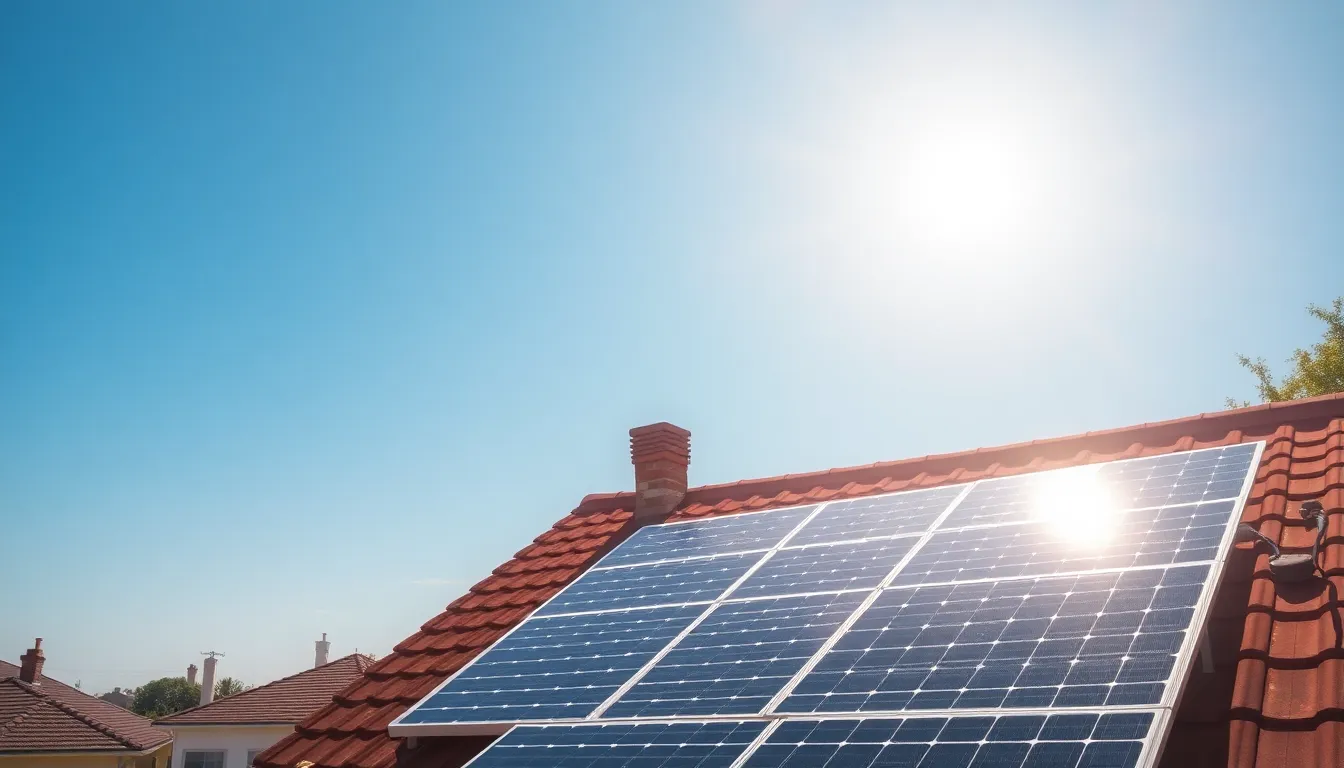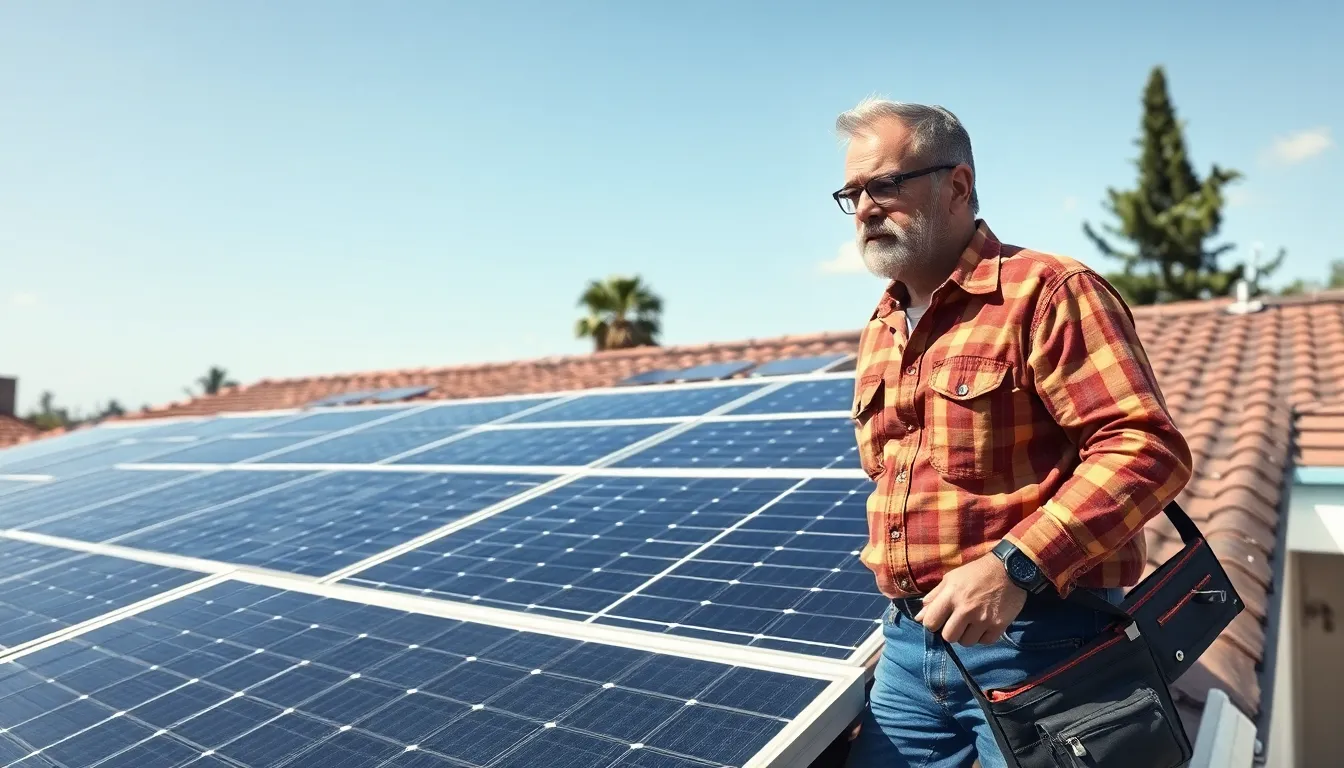As the world shifts towards sustainable energy solutions, solar panels have emerged as a leading choice for homeowners and businesses alike. Harnessing the sun’s power not only reduces reliance on fossil fuels but also cuts energy costs significantly. With advancements in technology, solar panels have become more efficient and accessible than ever.
The appeal of solar energy goes beyond just environmental benefits. Many are drawn to the potential for savings and energy independence. As governments worldwide implement incentives and rebates, the transition to solar power is not just a trend—it’s a smart investment for the future. Understanding how solar panels work and their advantages can help anyone considering this eco-friendly option make informed decisions.
Table of Contents
ToggleOverview Of Solar Panels
Solar panels convert sunlight into electricity, offering a renewable energy source for residential and commercial use. These panels consist of photovoltaic (PV) cells that capture sunlight, generating direct current (DC) electricity. An inverter then converts DC electricity into alternating current (AC), which powers homes and businesses.
Various types of solar panels exist, including monocrystalline, polycrystalline, and thin-film panels.
- Monocrystalline panels: Made from single-crystal silicon, these panels are known for high efficiency and space-saving properties. They offer the longest lifespan.
- Polycrystalline panels: Composed of multiple silicon crystals, polycrystalline panels are less efficient but are generally less expensive, making them attractive for budget-conscious consumers.
- Thin-film panels: These panels use a layer of semiconductor materials, making them lightweight and flexible. However, they typically have lower efficiency rates compared to crystalline options.
Solar panels help reduce electricity bills by generating free energy from sunlight. Homeowners can offset their energy costs significantly, especially in regions with abundant sunlight.
In addition to financial savings, solar energy decreases carbon emissions and promotes sustainability. By choosing solar panels, individuals contribute to reducing dependence on fossil fuels, supporting a cleaner environment and a sustainable future.
Government incentives, such as tax credits and rebates, enhance the affordability of solar panel installations. As technology progresses, solar panel efficiency continues to improve, making solar energy a viable option for more people.
Understanding the functionality and available options enables informed decision-making for those considering solar energy solutions.
Benefits Of Solar Panels

Solar panels offer numerous advantages for both the environment and finances. These benefits contribute to their growing popularity as an energy solution.
Environmental Impact
Solar panels significantly reduce carbon emissions, leading to a cleaner atmosphere. They generate electricity without depleting natural resources or harming ecosystems. Each kilowatt-hour of solar energy produced prevents approximately 0.5 to 1.5 pounds of CO2 emissions, depending on the energy source replaced. Using solar power decreases reliance on fossil fuels, promoting sustainability. Additionally, solar panels lower water usage in electricity generation, supporting water conservation.
Cost Savings
Solar panels lead to substantial cost savings on electricity bills. Homeowners can save between 20% to 50% on their monthly utility costs with a solar energy system. Investing in solar can lower bills by generating free power from sunlight. Incentives like federal tax credits, which can cover up to 26% of installation costs, further enhance savings. Over 20 years, potential savings range from $10,000 to $30,000, depending on location and electricity rates. With decreasing installation costs, solar energy becomes an even more attractive financial investment.
Types Of Solar Panels
Solar panels come in various types, each offering distinct advantages and performance characteristics. Understanding these options helps in selecting the most suitable system for energy needs.
Monocrystalline Panels
Monocrystalline panels, made from single-crystal silicon, deliver high efficiency, typically ranging from 15% to 22%. These panels use high-quality materials, which allows for better performance in low-light conditions. They occupy less space compared to other types, making them ideal for residential rooftops. The lifespan for most monocrystalline panels spans 25 years or more, providing strong longevity and warranties of 25 years. However, costs tend to be higher due to the manufacturing process.
Polycrystalline Panels
Polycrystalline panels consist of multiple crystal formations, resulting in lower production costs. Their efficiency generally falls between 13% and 16%, making them less efficient than monocrystalline panels. Polycrystalline panels perform adequately in normal sunlight but may lose performance in extreme temperatures. Despite lower efficiency, they offer a cost-effective choice for homeowners looking to reduce initial investments. Lifespan averages around 20 to 25 years, often accompanied by 25-year warranties.
Thin-Film Panels
Thin-film panels, composed of layers of photovoltaic material, provide flexibility and lighter weight, suitable for various applications, including flexible surfaces. Their efficiency ranges between 10% and 12%, making them less efficient compared to crystalline options. However, thin-film panels perform better in high temperatures and low light. These panels tend to be less expensive to produce, leading to lower upfront costs. Lifespan typically varies from 10 to 20 years, with warranties reflecting this shorter operational potential.
Installation Process
The installation process for solar panels involves several key steps, ensuring the system is set up efficiently and effectively.
- Site Assessment: A professional installer evaluates the property to determine the optimal position and size of the solar array. They consider factors such as roof orientation, shading, and structural integrity.
- System Design: After assessing the site, the installer creates a customized solar system design. This design includes panel placement, inverter configuration, and wiring layout.
- Permitting: The installer obtains necessary permits from local authorities. This step adheres to regulations ensuring the system meets safety and building codes.
- Installation Preparation: Prior to installation, the installer orders the appropriate equipment. This includes solar panels, inverters, mounting systems, and electrical components.
- Mounting: Contractors secure mounting structures to the roof or ground. They ensure the mounts are sturdy and aligned for optimal panel exposure to sunlight.
- Panel Installation: Installers place and connect the solar panels to the mounts. They follow manufacturer specifications to guarantee proper array configuration.
- Electrical Connections: Technicians connect the solar panels to the inverter, which converts the generated DC electricity into usable AC electricity. They also connect the system to the home’s electrical panel.
- System Testing: After completing the installation, the system undergoes testing to verify functionality. Technicians check connections and assess overall performance.
- Final Inspection: A final inspection by local authorities or utilities may occur to confirm adherence to codes and regulations.
- Activation: After successful inspection, the solar system is activated. Homeowners start generating solar power, contributing to energy savings and sustainability.
This installation process emphasizes the importance of professional guidance to maximize system efficiency and ensure compliance with legal standards.
Maintenance And Longevity
Ensuring solar panels maintain optimal performance involves regular maintenance practices. Cleaning panels monthly or biannually removes dirt and debris that can reduce efficiency. Inspecting the system for wear or damage twice a year adds another layer of care, enhancing longevity.
Longevity varies by type of solar panel. Monocrystalline panels typically last 25 years or longer, often backed by warranties that support their durability claims. Polycrystalline panels boast lifespans of 20 to 25 years, while thin-film panels usually last about 10 to 20 years. Selecting the right type based on expected usage and local environment plays a crucial role in overall longevity.
Performance degradation occurs over time but generally remains low. Most solar panels lose about 0.5% to 1% of their efficiency per year. After 25 years, monocrystalline panels may still operate at roughly 80% of their original capacity, while polycrystalline panels maintain around 70% capacity.
Maintaining appropriate shading levels is vital. Trees, buildings, or other obstructions that block sunlight can decrease panel effectiveness. Regular landscaping or distance management helps ensure panels receive direct sunlight, optimizing energy production.
Scheduling professional inspections every 5 years can identify issues that may lead to performance drops. Technicians check electrical connections, inverter functionality, and general system integrity. This proactive approach extends system life and efficiency.
Solar panels represent a powerful solution for those seeking sustainable energy alternatives. Their ability to reduce electricity costs while promoting environmental responsibility makes them an attractive investment. As technology advances and efficiency improves, more homeowners and businesses are likely to embrace this eco-friendly option.
With various types of solar panels available, individuals can choose the best fit for their needs and budget. Proper installation and maintenance are essential for maximizing performance and longevity. As the world shifts towards renewable energy sources, solar panels will continue to play a crucial role in shaping a cleaner and more sustainable future.

